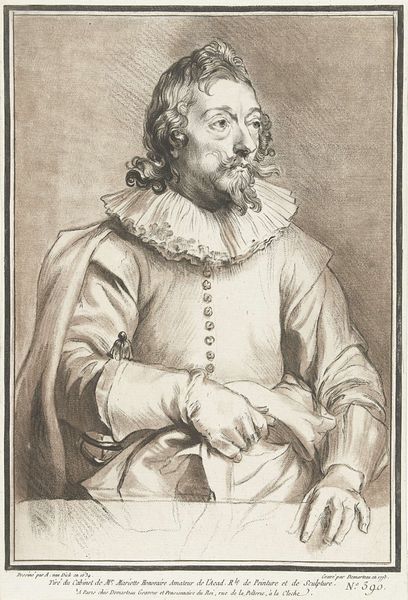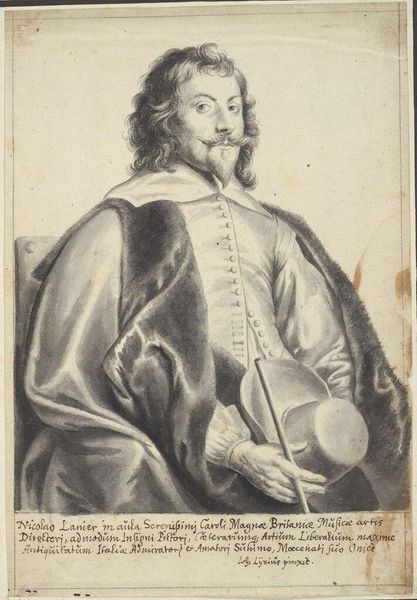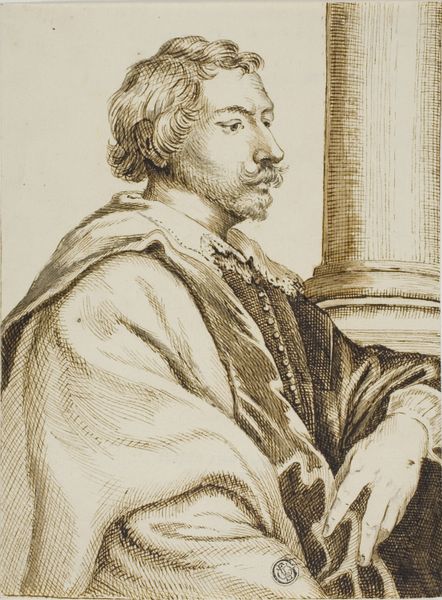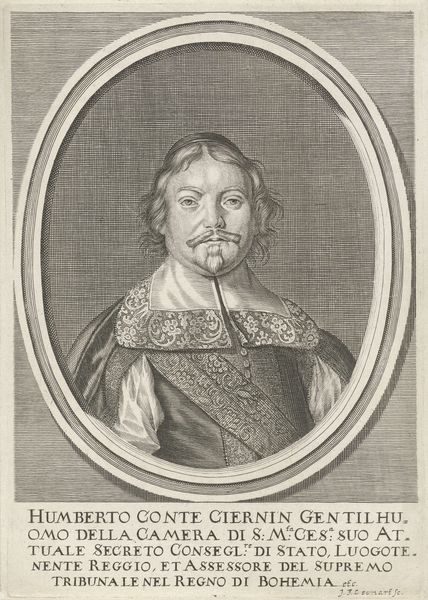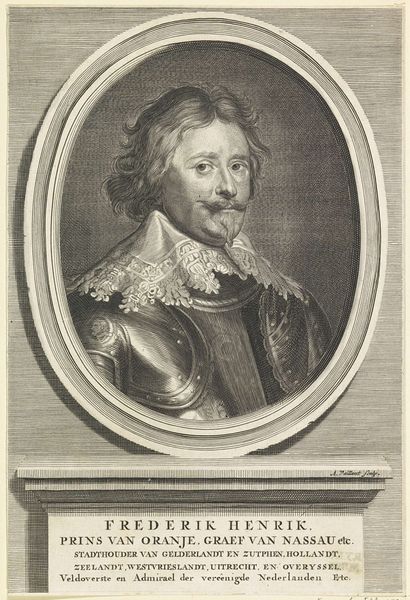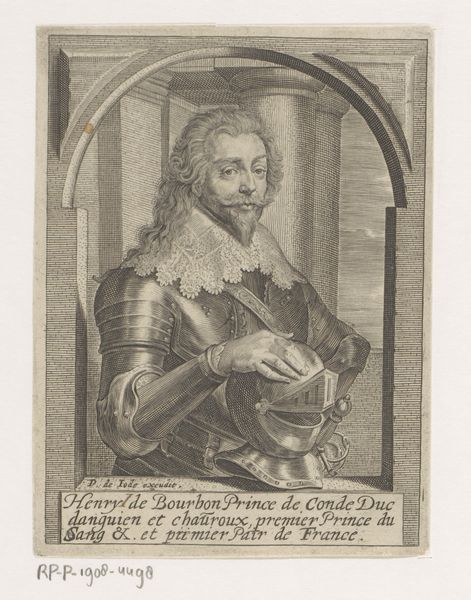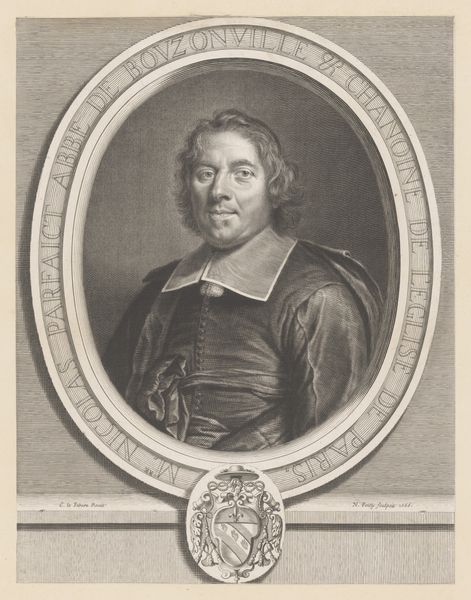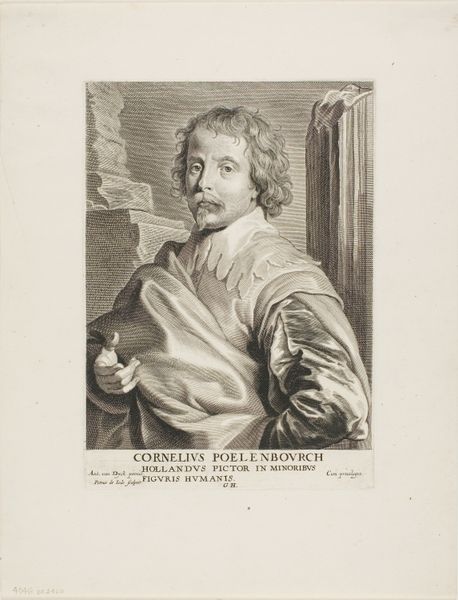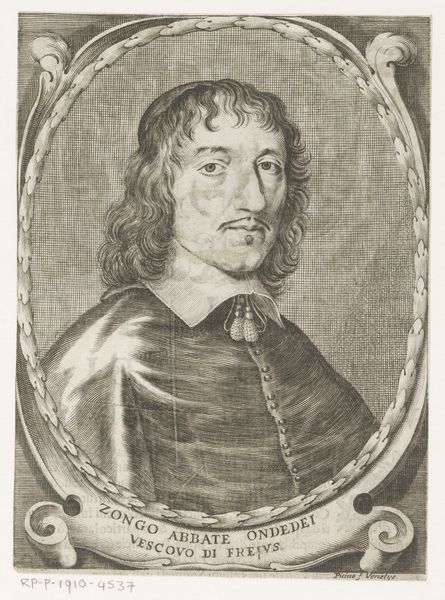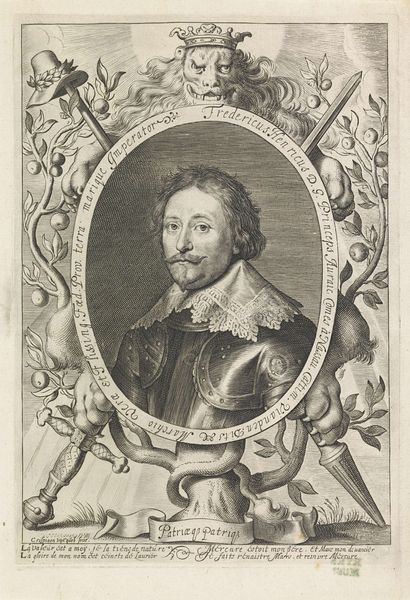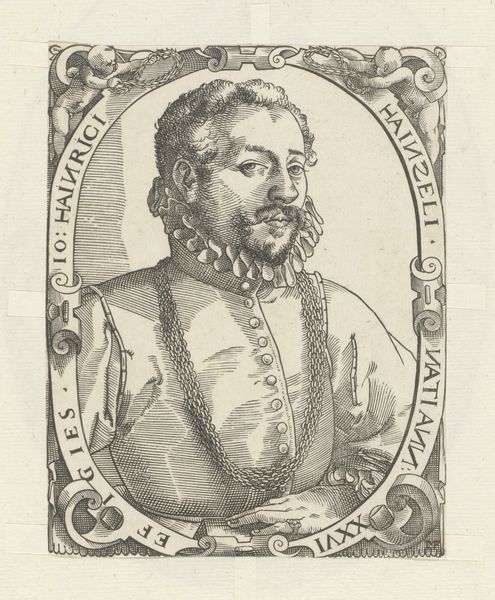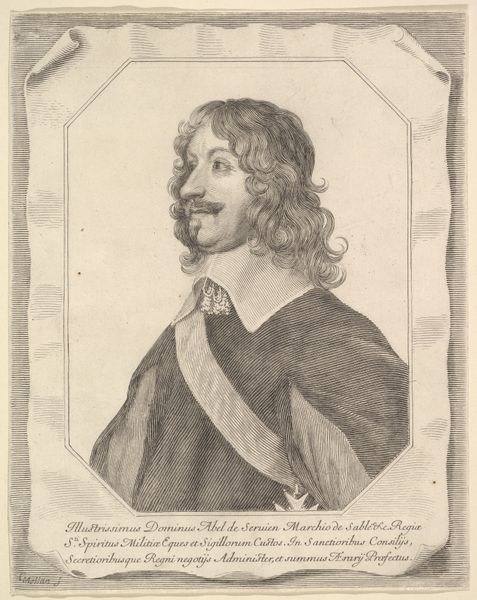
Dimensions: 263 × 185 mm (image); 271 × 188 mm (sheet; cut within platemark)
Copyright: Public Domain
Curator: Immediately striking is the texture of this print; there's a tactile quality to the lines, almost as if you could feel the fabric of his ruff. Editor: Indeed. What we’re looking at is a print entitled "Jacomo de Cachiopin," made in 1773. The piece on display at the Art Institute of Chicago, after a work by van Dyck, was realized as an engraving by Gilles Demarteau. It’s an intriguing demonstration of how portraiture functioned in the 18th century. Curator: Demarteau really captured something here, a hint of guardedness in the man's expression, a quiet dignity. I keep wondering who Jacomo de Cachiopin was. The engraving, in some way, immortalizes a person likely lost to general history. Editor: Precisely! He clearly occupied a position of some stature. Consider the sitter's dress, indicative of wealth and status during that era. More than a record, portraiture like this bolstered a family's image, legitimizing its place within the broader societal framework. Cachiopin, through van Dyck's original and Demarteau's reproduction, claims his place in that story. The ruffle at his neck is also particularly visually intriguing, framing the head and capturing attention. Curator: The ruff is quite evocative. I’m also intrigued by how Demarteau used engraving techniques to mimic the soft, flowing lines one might find in a drawing. Look at the subtlety of shading around the face, a tonal range he’s crafted. It suggests the democratization of imagery and access, as printmaking broadened. Editor: And consider how Baroque aesthetics seep into portraiture; a sense of dynamism and contained drama plays out even in this somewhat simple presentation. It points to the ways artistic styles become interwoven with political messaging. The act of depicting a figure in a certain manner became part of solidifying their authority. Curator: Looking at it, I feel a quiet melancholy settles in. Maybe because he seems both present and distant. I imagine those eyes saw many things. Editor: I agree; it becomes an artifact both personal and undeniably reflective of the machinations of status in 18th-century European society.
Comments
No comments
Be the first to comment and join the conversation on the ultimate creative platform.
